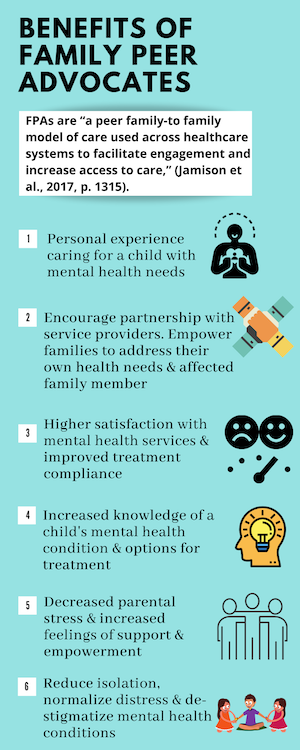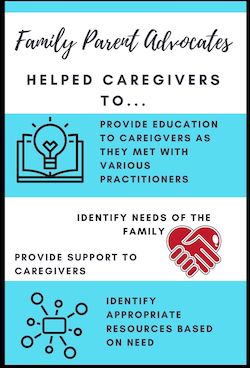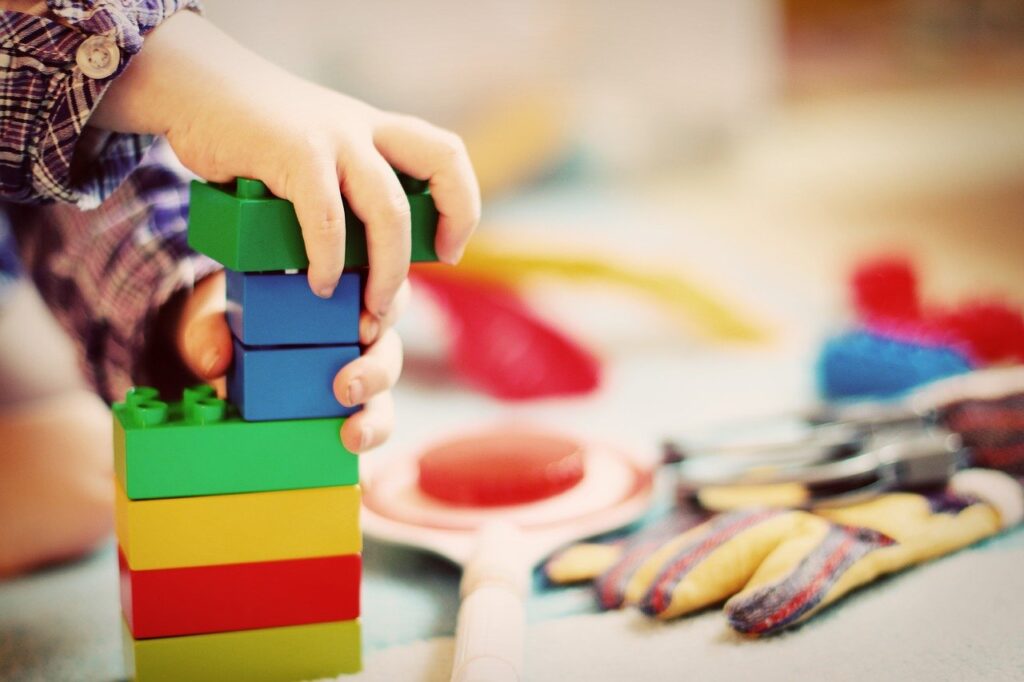
Journal
Journal of Autism and Developmental Disorders (SNIP score 0.984)
Article Title
Randomized Comparative Efficacy Study of Parent-Mediated Interventions for Toddlers With Autism
Level of Evidence
- 1A Systematic review of homogenous RCTs
- 1B Well-designed individual RCT
- 2A Systematic review of homogenous RCTS
- 2B Individual prospective cohort study, low quality RCT, ecological studies; and two-group, non-randomized studies
- 3A Systematic review of case-control studies
- 3B Individual retrospective case-control study: one-group, non-randomized pre-post test study; cohort studies
- Case series (and low-quality cohort and case control study)
- Expert opinion without explicit critical appraisal
Play as Occupation
Play is the quintessential occupation of all children. It impacts self-regulation, problem solving, confidence, emotional well being, creativity and more. In our ridiculously overscheduled culture, play is losing its footing and child development specialists are strongly advocating for people to comprehend and believe its worth. Play is fundamentally crucial right now as children live in a season of history with significant change to routines and dynamics. We are addressing important social issues, and throughout this children need time to play to help their emotional and mental health.
Uncovering the Skills That are Already There
Children with an Autism Spectrum Disorder have a different approach to many domains of life, including play. I personally believe that there is great value in children playing in a way that is naturally motivating, interesting and rewarding to them. However, I also believe that scaffolding and expanding the play skills of children with ASD is extremely beneficial. Improving play skills can lead to improved problem solving, perspective taking, relationships, communication skills and more. Meeting the child at their interests and style of play while emphasizing connection and relationship building both respects who they are while also seeking to provide them with an increased range of life skills.
More Play is Better for Everyone!
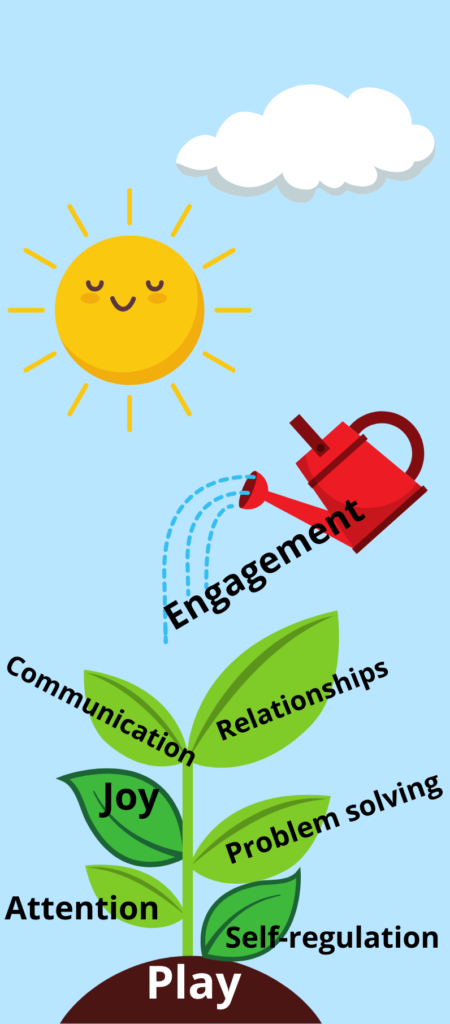
Also, let’s not forget how important it is for parents, siblings and friends to be able to meaningfully connect with their loved ones who have ASD. The child who expands his or her play skills is not the only person who benefits from their increased engagement in the world around them.
So how do we go about promoting an increase in play skills for kids with an ASD?
Many children on the Autism Spectrum often seek out play that is driven by the enjoyment derived by sensory stimulation. In the clinic I have loved seeing my kids with ASD grow their play skills. What most especially brings me joy is seeing them look at me in anticipation of me doing something silly or animated and then their laughter and joy that explodes when I deliver. I also love seeing what ideas they come up with and how they try to engage me in their play scheme. I have had a lot of success in using cause and effect play with balls, blocks, cars, and figurines. We often hit a stumbling block when it comes to symbolic play.
It’s Not “Just Play.”
I took the course, Play with a Purpose: Effective Play-Based Therapy & Early Child Development by Cari Ebert, and it was a game changer for me. It totally changed how I thought about therapy. I am purposeful, intentional and focused when it comes to getting things done in therapy. Sometimes I miss the forest for the trees. Learning about the development of play and how it impacts everything in a child’s development helped me to take a step back and fall in love with play. Parents often come to us wanting to address handwriting, shoe tying and meltdowns. All of those are occupations that I love. However, I came to see that if we neglect play, we are seriously limiting the progress we can help our kids to make in all other areas.
Methods
Participants
Researchers recruited caregivers and 86 children with an Autism Spectrum Disorder aged 22-36 months who attended an early intervention program. The children attended the program for 30 hours per week, during which they received behavioral, speech and occupational therapy. The researchers randomly assigned children and their caregiver to receive 10 weeks of either hands-on parent training in the JASPER program or a psychoeducational intervention (PEI).
JASPER promotes joint attention, symbolic play, engagement and regulation through a naturalistic approach. The PEI provides parents individual education and support on having children with an Autism Spectrum Disorder.
Intervention
Parents in the PEI group spent 1 hour with an interventionist per week. They learned about Autism, details of specific behavioral impairments, principles of managing behavior, strategies for teaching new skills, improving social interaction and communication, service availability, managing parent stress, and sibling/family and community responses to Autism.
A trained interventionist instructed parents in the JASPER group in 2 thirty minute sessions per week. Parents learned through a hands on approach the strategies of the JASPER method. Parents learned to identify their child’s developmental level of play as well as the child’s demonstration of social communication gestures. Interventionists taught parents to use strategies in a structured sequence in order to promote opportunities for their child to initiate interest in an activity or a toy. Parents also used these skills to promote joint attention in their play interactions with their children.
Measures
Play & Joint Attention with Parents
Examiners who were blind to the interventions coded interactions between children and parents by watching 10 minute video recordings of play sessions. This occurred pretreatment, posttreatment and 6 months after the study ended. During the sessions, researchers gave parents a standard set of toys (dolls, dishes, puzzles, trucks, shape sorter and blocks) (Kasari, Gulsrud, Paparella, Hellemann, & Berry, 2015, p. 556). Parents engaged in free play with their child using these toys. Raters qualified engagement as joint engagement if the child was aware of the parent’s participation, acknowledged their parent with non-verbal language and/or used language or demonstrated following their parent’s language in play (Kasari, Gulsrud, Paparella, Hellemann, & Berry, 2015, p. 556).
Evaluators also coded observed instances of children’s play levels, diversity of their play and instances of initiating joint attention.
Parent Stress, Language Assessment & Joint Attention with Teacher
In addition, researchers coded play interactions between children and their teacher playing together in the classroom, assessing for time spent in joint engagement. This occurred pretreatment and at the end of treatment.
Examiners used the Mullen Scales of Early Learning and Reynell Developmental Language Scales to assess receptive and expressive language skills. These items were completed pretreatment and at the follow up 6 months after intervention ended.
Parents completed the Parenting Stress Index pre-treatment, post-treatment and at the 6 month follow up, providing information about parent stress levels.
Meat and Potatoes
Duration of Joint Attention
The data analysis demonstrated a significant increase in time spent in joint engagement for the children in the JASPER group compared to the PEI group. The children in the JASPER group’s length of time jointly engaging increased by more than double. At the six month follow up, children in the JASPER group continued to have significantly higher amounts of time spent in joint engagement than peers in the PEI group (Kasari, Gulsrud, Paparella, Hellemann, & Berry 2015, p. 558).
Initiating Joint Attention
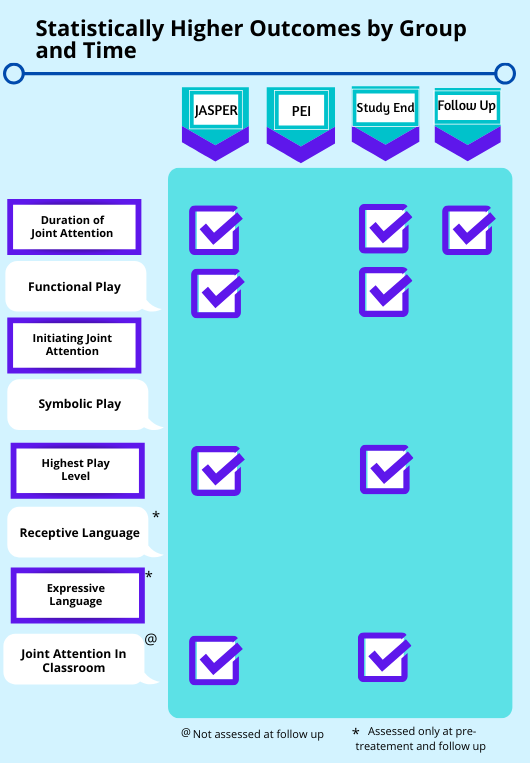
No difference by treatment group existed in impacting the rate at which children initiated joint attention. So many children demonstrated such low incidences of initiation of joint attention that they did not fall within the measurable range at baseline. Taking data from the entire sample of study participants, the mean number of children initiating joint attention increased and the total number of children demonstrating initiation of joint attention increased significantly over the six months. It did not differ by group.
Functional Play Types
Children in the JASPER group demonstrated statistically significant higher types of functional play than the children in the PEI group. At the time of the 6 month follow up, the difference between the incidences of functional play between groups was not significant.
Symbolic Play Types
The group to which children belonged had no statistically significant impact on the occurrences of symbolic play or the rate at which children increased their symbolic play skills. This remained consistent at the 6 month follow up.
Highest Play Level Achieved
Children in the JASPER group increased more in achieving higher levels of play than their peers in the PEI group. However, at 6 months, the difference between the achievement of highest play level between groups was not significant.
Reynell Receptive Language
The group to which the children belonged had no impact on the rate of their receptive language improvement scores. Children in both groups improved their receptive language skills by approximately 17 months over the 9 months of the study and follow up (Kasari, Gulsrud, Paparella, Hellemann, & Berry, 2015, p. 560).
Reynell Expressive Language
The group to which the children belonged had no impact on the rate of their expressive language improvement scores. Children in both groups improved their receptive language skills by an average of 10 months over the 9 month time frame (Kasari, Gulsrud, Paparella, Hellemann, & Berry., 2015, p. 560).
Parent Stress Index
Parents in the PSI group reported statistically significant lower stress in the child-related domain. At follow up, more parents reported lower levels of stress in this domain, but there was no difference based on the group to which they belonged. Parents in the PSI and JASPER group reported insignificantly different levels of stress for the parent-related domain.
Classroom observations
Children in the JASPER group spent statistically significant more time jointly engaging with their teacher than their peers in the PEI group by the end of treatment. The children in the JASPER group increased from 5.7 minutes to 8.9 minutes jointly engaging with their teacher. Children in the PEI group increased from 6.9 minutes to 7.4 minutes.
Things to Consider
The external validity of the study is limited as the children were recruited from an early intervention program that they all attended. We all work with children who tend to come from a variety of settings and attend a variety of programs.
It’s exciting that children in the JASPER group made gains in functional play skills and achieved higher levels of play by the end of intervention. However, the gains did not remain significantly different than those who did not receive the treatment. The authors mention exploring providing parents with sessions after intervention to ensure that the carryover at home continues.
Carryover from Parents to Classroom
I did find it impressive that the children’s joint attention carried over to engaging with their teachers even though the children were learning the skills at home. Also noteworthy is that the children from the JASPER group continued to have higher joint attention at the time of follow up.
I love structure and routine, and I need to learn more about the JASPER program to develop my opinion of it. You can also find more information about it here. It even seems that there is a training you can complete for free. I think it’s important to give kids the lead with play, but I do think we as adults can effectively scaffold their play by using specific techniques that may reach them most. For a lot of kids, you might not have to think too hard to figure them out. However, as kids on the Spectrum process in a unique way, we always have to be open to learning how to most effectively communicate with and reach them also.
What Do You Think?
Have you heard of the JASPER model before? What other strategies or programs have you used to promote play skills for children on the Autism Spectrum?
References
Kasari, C., Gulsrud, A., Paparella, T., Hellemann, G., & Berry, K. (2015). Randomized comparative efficacy study of parent-mediated interventions for toddlers with autism. Journal of Consulting and Clinical Psychology, 83(3), 554-563. doi:10.1037/a0039080


